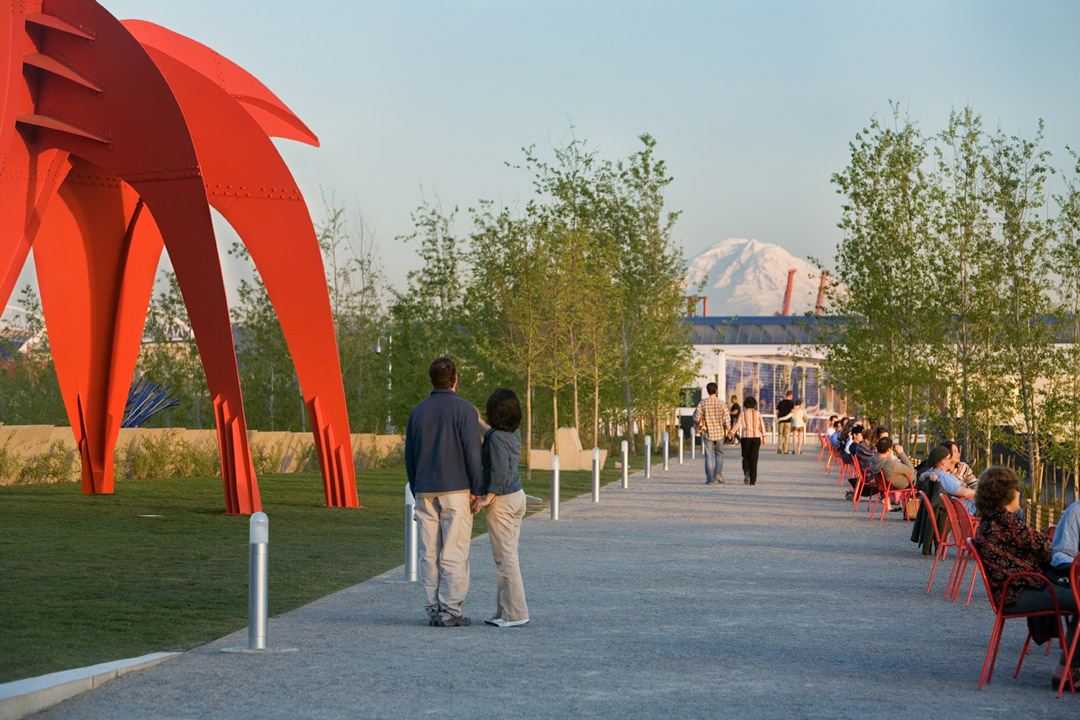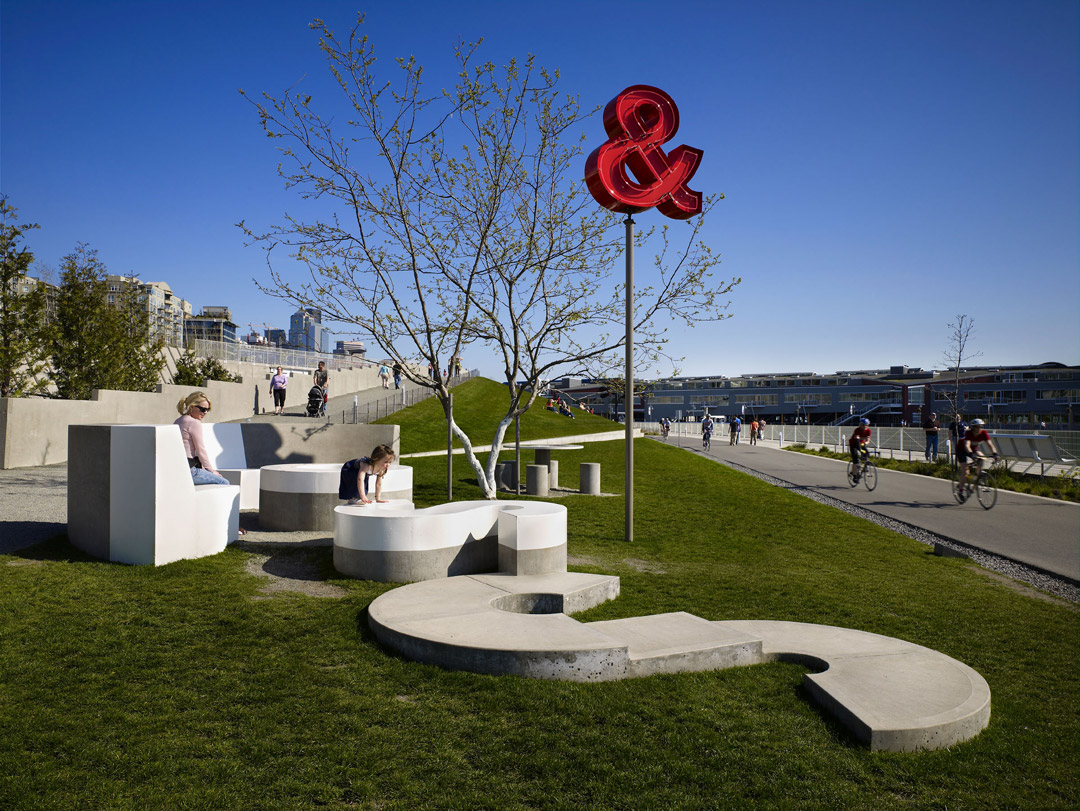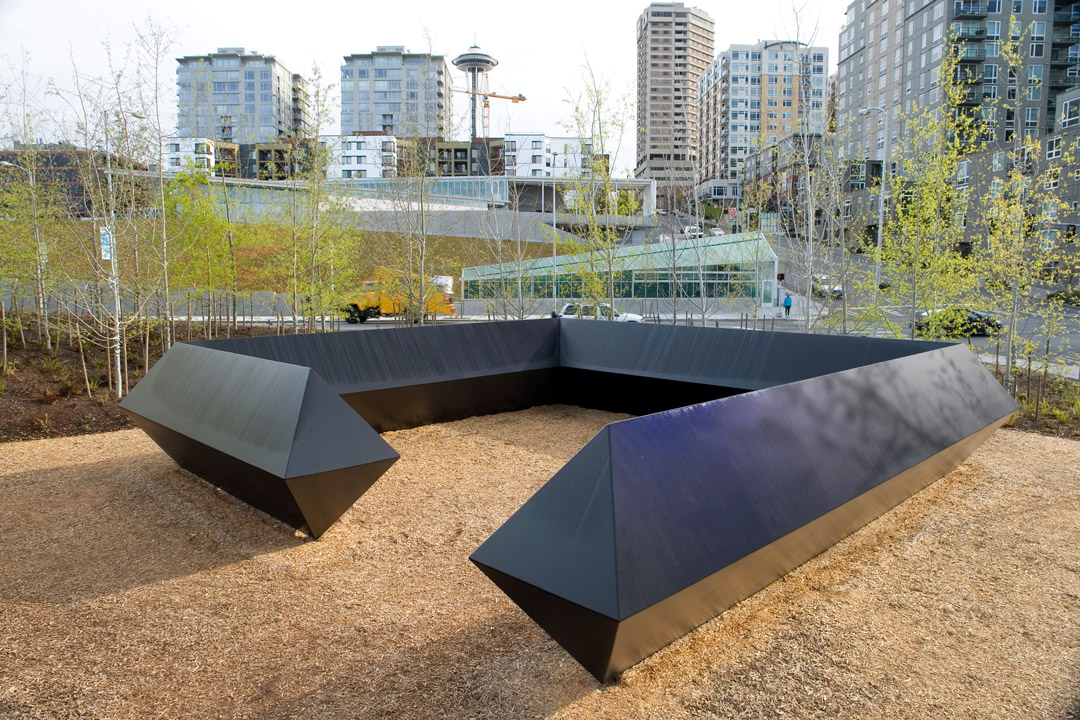Beneath the Surfaces: Conservation and Care at the Olympic Sculpture Park

Stroll through the Olympic Sculpture Park on a summer day, and you’ll find yourself immersed in an overload of the senses. The Puget Sound scents the air around Alexander Calder’s towering sculpture, The Eagle, with a salty freshness, while the waves below lap in the wind. Uninterrupted sunlight warms the curving, concrete benches of Roy McMakin’s Love & Loss to the touch. Bike commuters coast along the Elliott Bay Trail, an urban artery connecting bustling downtown Seattle and the neighborhoods to the north. But while visitors enjoy the natural and manmade beauty of the park, the outdoor sculptures on view are constantly under attack by the very elements that makes the park so special.
This coalescence of elements within the Olympic Sculpture Park provides a different sensory experience when your job is to preserve its works of art. SAM’s Chief Conservator Nicholas Dorman explains, “It’s a pretty aggressive environment out there. When the sun does shine, it’s unimpeded and bounces off the Sound, creating very intense light levels. Unhindered wind also comes through, carrying salt and lots of pollution. All of these elements break down the sculptures’ materials over time.”

Love & Loss
Care for each sculpture in the park requires attention to a range of factors that include its materials and fabrication, the artist’s or foundation’s intentions, and SAM’s curatorial and exhibition design philosophies. It’s easy to understand that the illuminated ampersand in Love & Loss requires upkeep in order to keep glowing. However, even its concrete benches and paths are prone to deterioration. Once a sculpture requires intervention, the conservators must consider many questions before deciding on a solution. Liz Brown, SAM’s Objects Conservator, describes, “When I’m looking for a treatment system, I have to keep in mind everything from how the public might interact with the piece, to the artist’s intent, to how the sculpture and the materials we apply are going to react to the environment.”
Coating the surface of Love & Loss is one part of its conservation treatment. When the conservators found that the original acrylic-polyurethane coating wasn’t performing well within the interactive environment of the installation, Brown worked with artist McMakin to replace it with a water-borne acrylic paint designed for pools, which she reapplies every year in order to preserve the aesthetic he originally envisioned for the piece. By comparison, sculptures painted with matte, highly pigmented paints, such as The Eagle and Tony Smith’s Stinger, are susceptible to damage by human touch because oils and contact more easily mar and break down the underbound coatings. The park’s proximity to the Puget Sound also brings the problem of chloride corrosion, making the coatings’ maintenance essential to the preservation of the metal sculptures.

As summer approaches, much of the conservation work at the park moves from behind-the-scenes to more publicly visible processes. Brown will soon begin cleaning all of the art and treating areas where corrosion has appeared. Several larger projects will also take place. This year, she hopes to manage refabrication of the Love & Loss ampersand and to determine a painted surface that will work for that portion of the sculpture in the long term. The next time you’re at the park, sitting on Love & Loss may feel a bit different, knowing more about the care that lives both within and beneath its surface.
—Erin Langner, Freelance Arts Writer and Former SAM Adult Public Programs Manager
This post is the fourth installment in a series of stories exploring the history of the Olympic Sculpture Park in celebration of its 10th anniversary. Over the course of this year, we will continue reflecting on the Park’s evolution over the past decade.